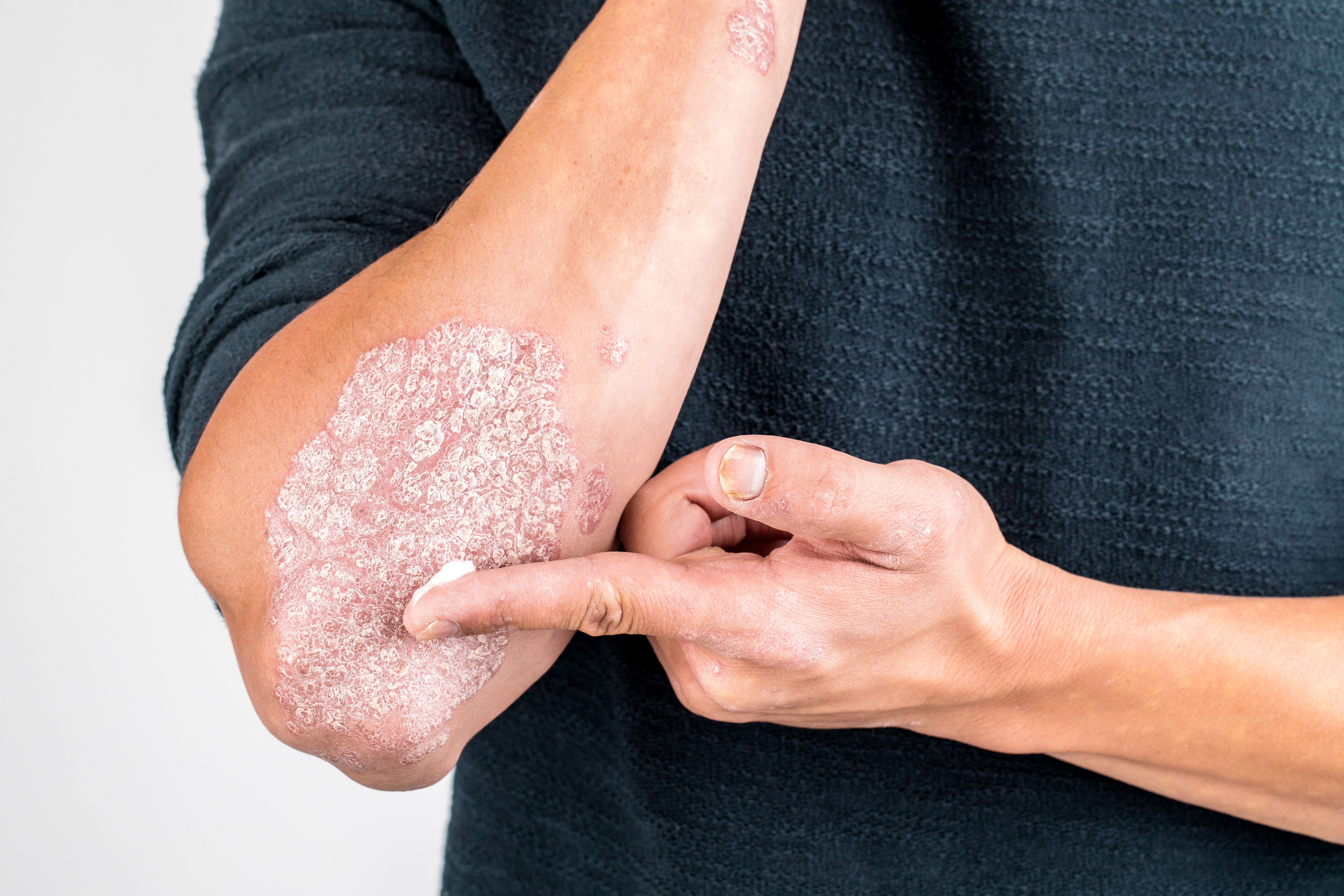- Acne
- Actinic Keratosis
- Aesthetics
- Alopecia
- Atopic Dermatitis
- Buy-and-Bill
- COVID-19
- Case-Based Roundtable
- Chronic Hand Eczema
- Chronic Spontaneous Urticaria
- Drug Watch
- Eczema
- General Dermatology
- Hidradenitis Suppurativa
- Melasma
- NP and PA
- Pediatric Dermatology
- Pigmentary Disorders
- Practice Management
- Precision Medicine and Biologics
- Prurigo Nodularis
- Psoriasis
- Psoriatic Arthritis
- Rare Disease
- Rosacea
- Skin Cancer
- Vitiligo
- Wound Care
Video
Plaque Psoriasis Patient Case 2: Factors in Selecting 2L Therapy
Author(s):
Shared insight on which factors are most important in determining second-line therapy for plaque psoriasis.
Transcript:
Christopher G. Bunick, MD, PhD: Dr Lebwohl, what factors do you consider while selecting a second-line treatment? How do you monitor and evaluate the treatment response to the second-line agent that you’ve given a patient?
Mark G. Lebwohl, MD: It’s many of the items that Helen just eloquently described. The first question I ask is, “Do you have psoriatic arthritis?” That usually takes me down an IL-17 or IL-23 path. Then there’s a host of questions. First, if they’re obese, I’m going to the stronger drugs, which are the IL-17 and IL-23 inhibitors. I ask them about cardiovascular risk factors. That’s 1 area where the TNF [tumor necrosis factor] blockers have the most data, but the IL-17s will probably eventually show the same, and I hope the IL-23s will as well.
I ask them if there’s a history of malignancy. This is all in their review of systems, so I can see it while I’m speaking to them. If there’s a history of malignancy, it’s going to be those 2 drugs again. I ask if there’s a history of inflammatory bowel disease. That will take me away from IL-17 blockers. Is there a history of demyelinating disease? That takes me away from TNF blockers. Do they have hepatitis C, hepatitis B, or HIV? Do they have a positive test for tuberculosis? There are many factors to consider. Do they need to be cleared quickly, or do they prefer fewer injections? What kind of job do they have? Do they travel a lot? That might push me toward a drug that’s injected less often. There are many factors to consider, and when I put all those together, we can usually come up with the logical best treatment for them.
Christopher G. Bunick, MD, PhD: Excellent. Based on our discussion, it’s pretty obvious that all of us use all the therapies available. We sometimes use the traditional oral systemic agents. We use the TNF-alpha inhibitors, the IL-12/23 inhibitor, the IL-17 inhibitors, and the IL-23 inhibitors. We’re using all of them. It sounds to me that what guides our decision-making is what’s right for our patients. It comes back to how we would treat our patient if they were our family member. It sounds like all of you are very skilled at deciding what to use based on each individualized patient experience. As Dr Torok, Dr [Jashin] Wu, and Dr Lebwohl have all said, there absolutely are times where it’s beneficial to switch biologic agents from one class to another. More specifically, Dr Torok, within the IL-23 inhibitor class, when might you switch from one IL-23 inhibitor to another? Have you had patients in whom switching within the IL-23 class has led to a big change in improvement?
Helen Torok, MD: I have. As Dr Lebwohl mentioned, I watch the time. With an IL-17, if I don’t get results within 4 or 6 weeks, I get nervous and don’t think it’s working. I’ll switch to an IL-23. With an IL-23, I’ll give them 8 weeks, and if I’m having no results or minimal results, then I’ll switch to another IL-23 drug. I’ve had success switching between those 2 in that class.
Transcript edited for clarity.
Newsletter
Like what you’re reading? Subscribe to Dermatology Times for weekly updates on therapies, innovations, and real-world practice tips.









